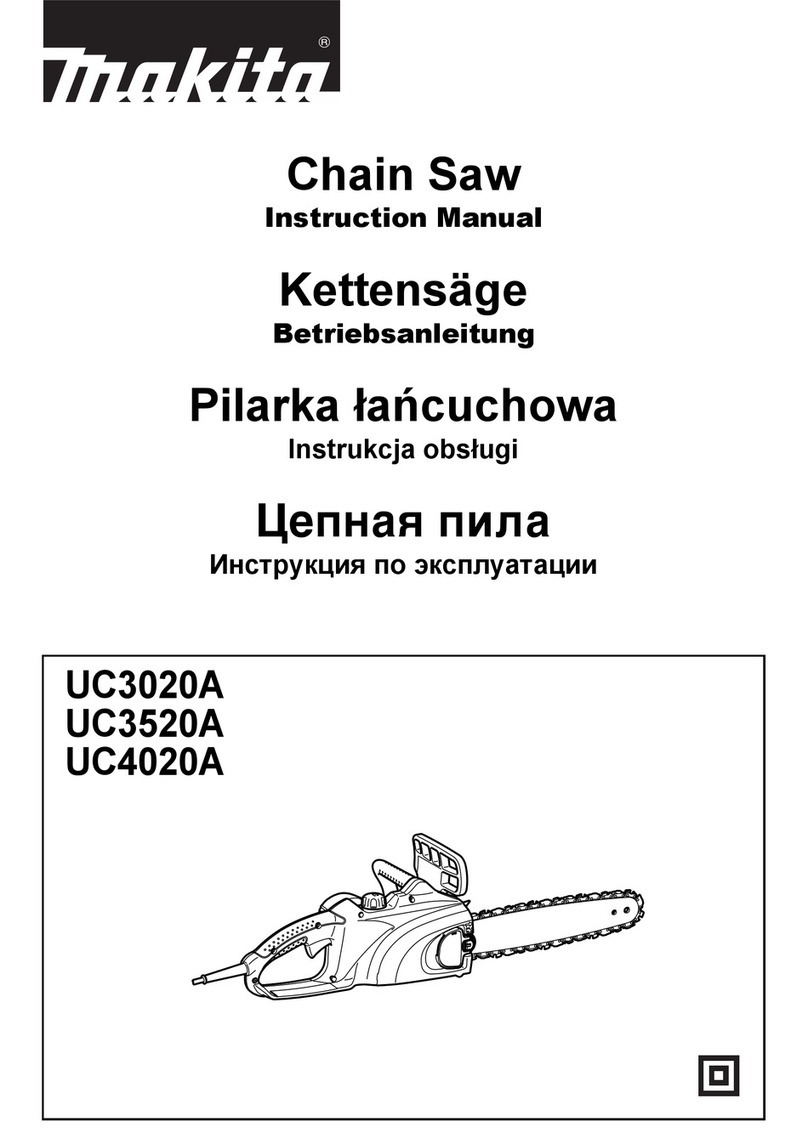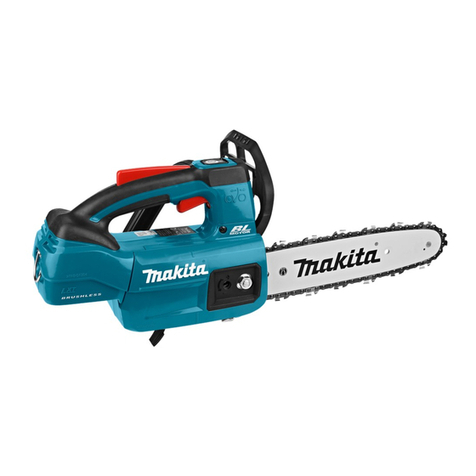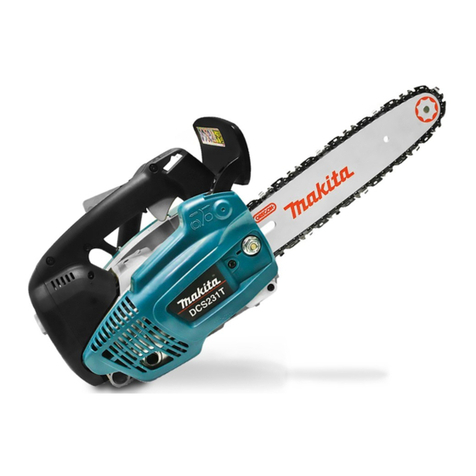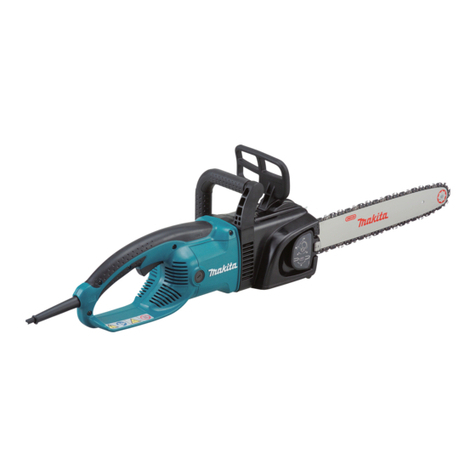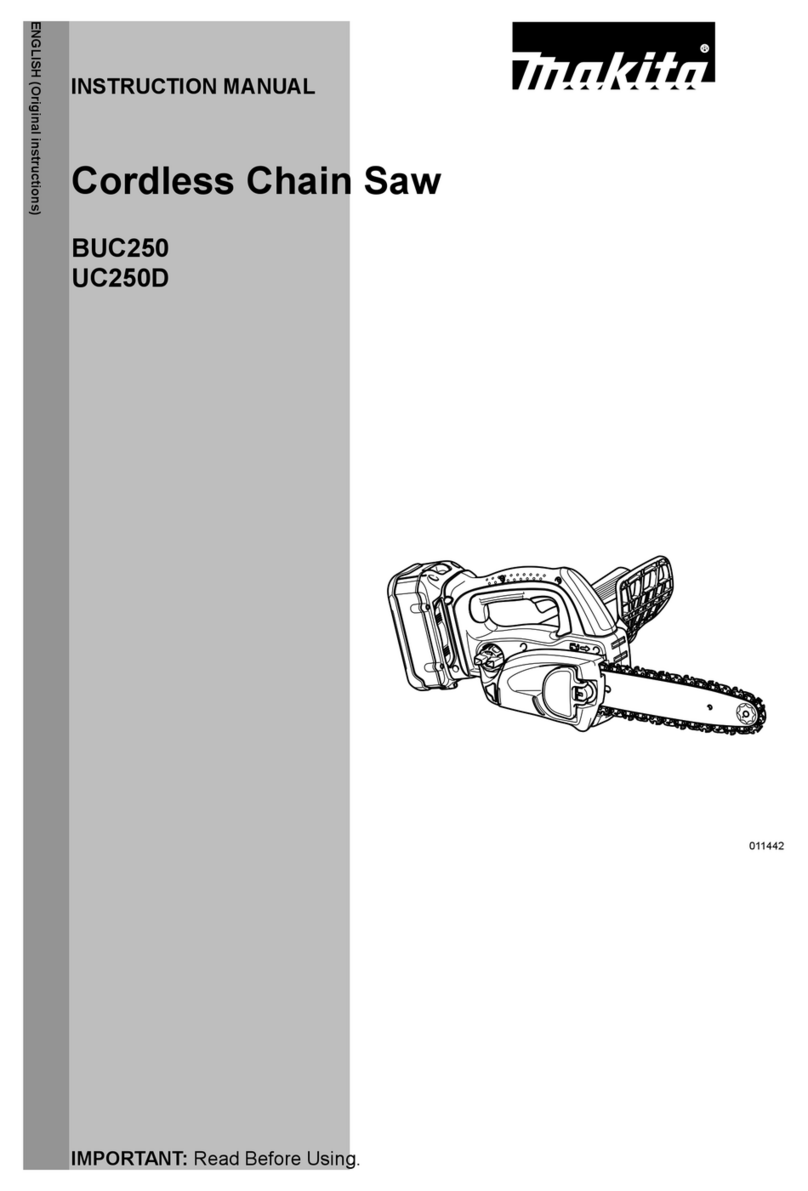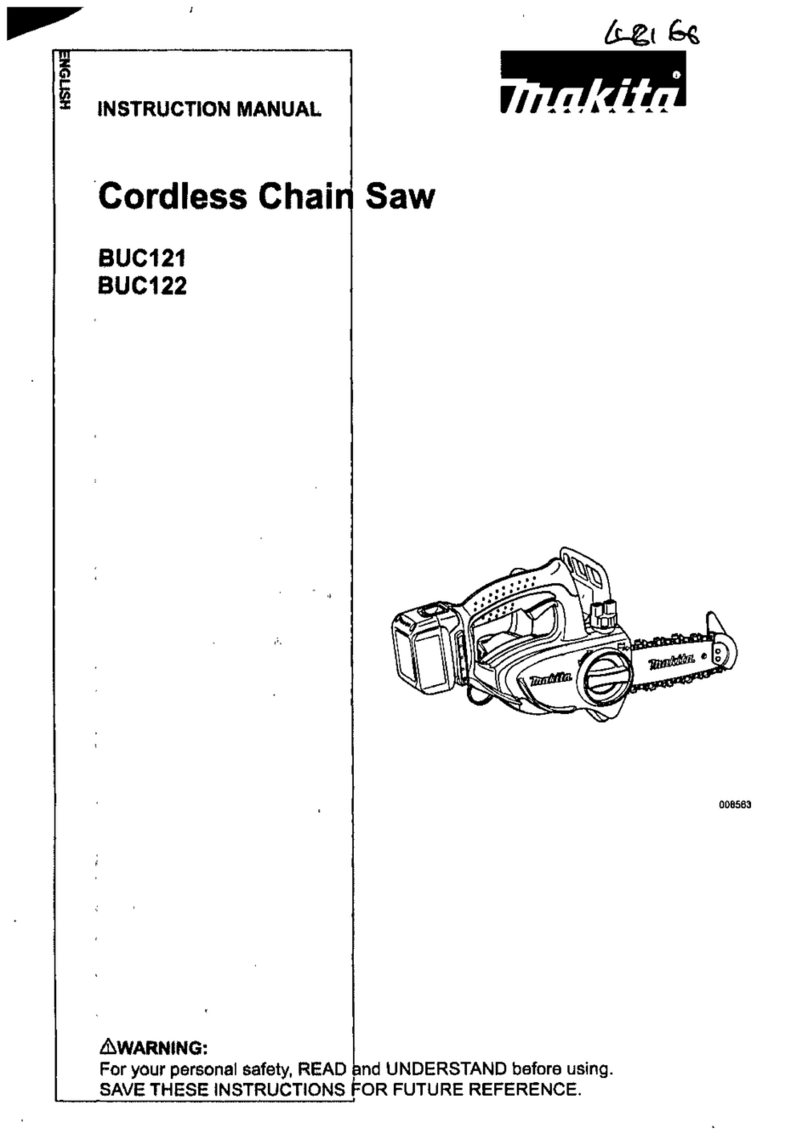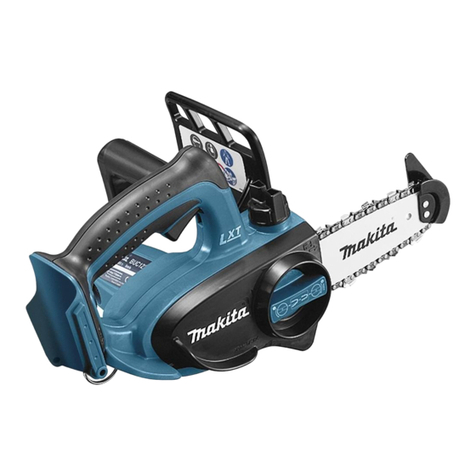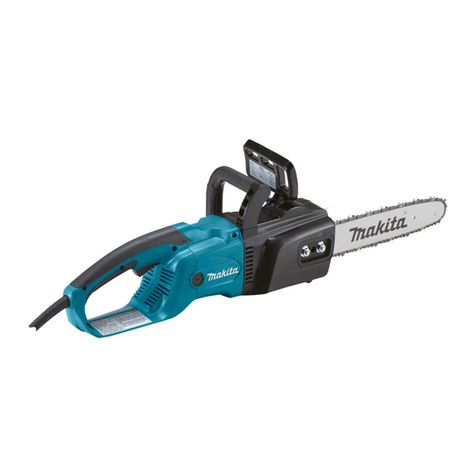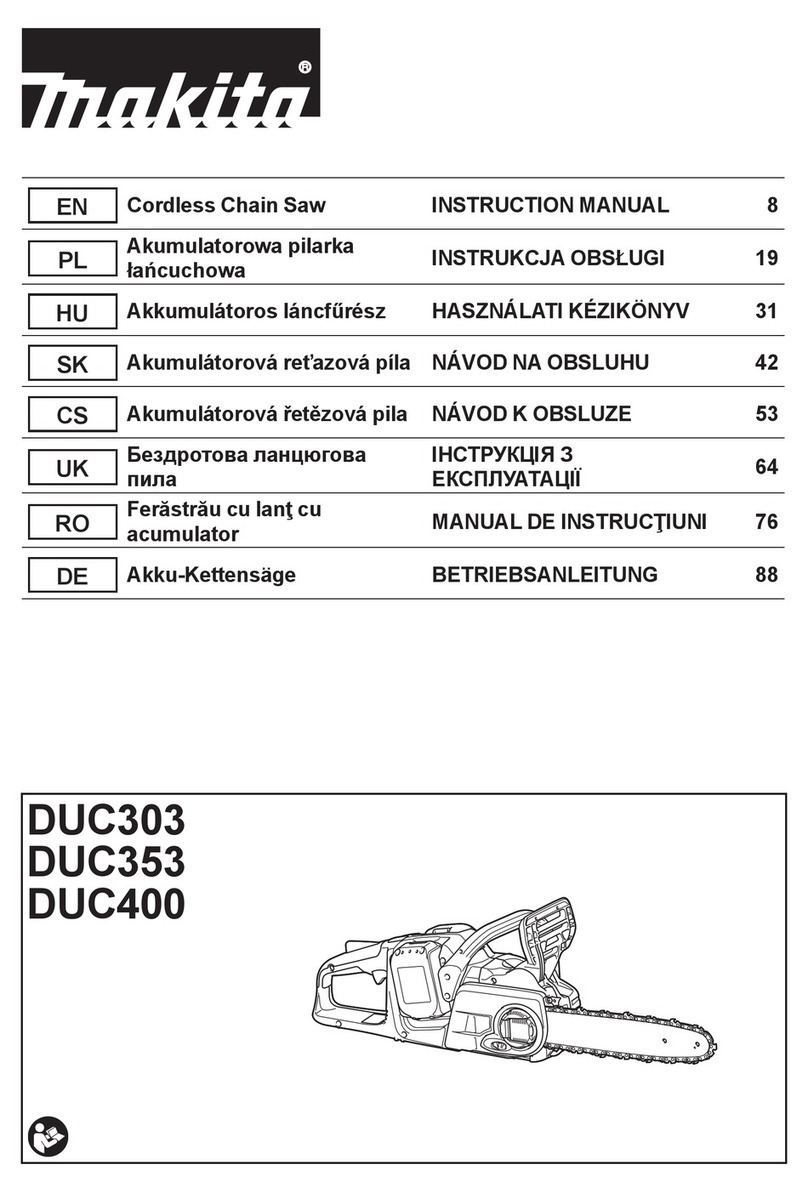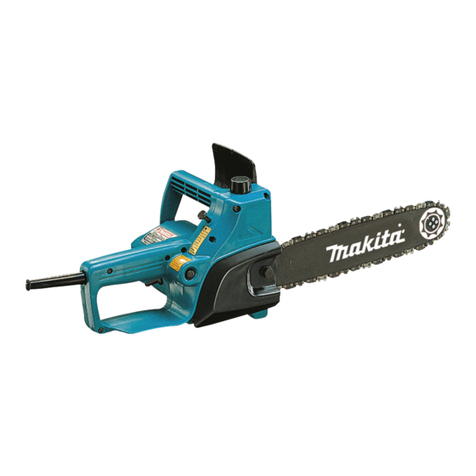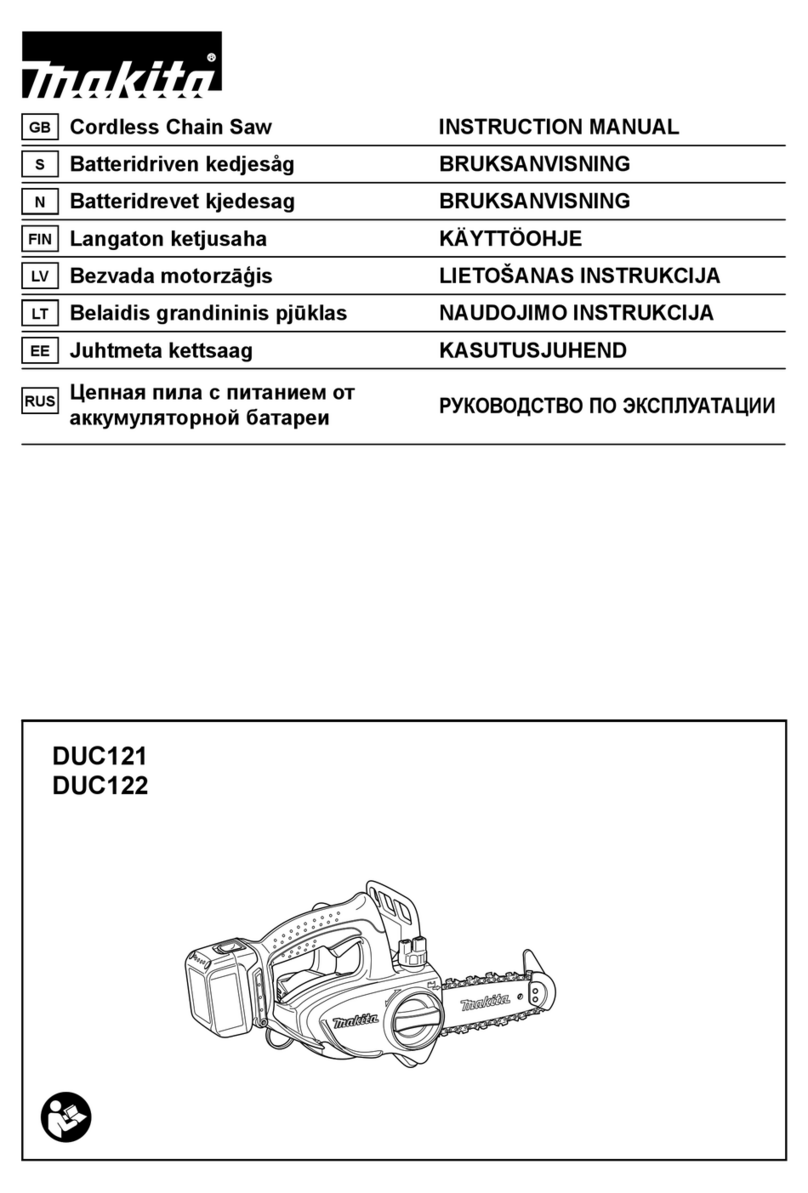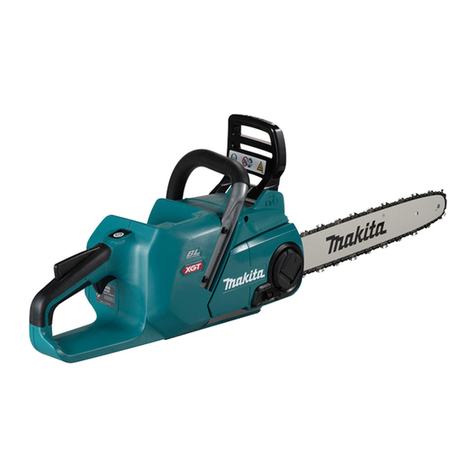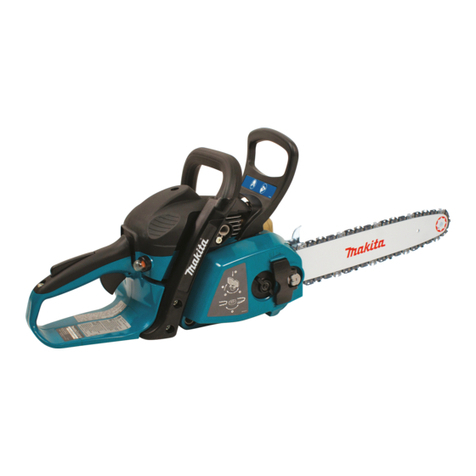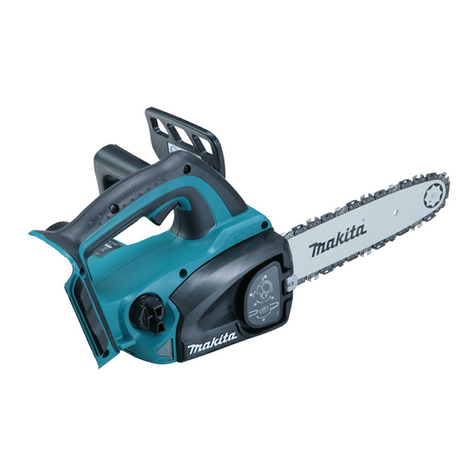
2
Thank you for purchasing a MAKITA product!
Congratulations on choosing a MAKITA chain saw! We are
condent that you will be satised with this modern piece
of equipment. The EA3500F-EA4301F are very handy and
robust chain saws with a new Design.
The automatic chain lubrication with variable‑ow oil pump
and maintenance-free electronic ignition ensure trouble-free
operation, while the hand-saving anti-vibration system and
ergonomic grips and controls make work easier, safer, and
less tiring for the user.
The Featherlight-Start system lets you start the saw
effortlessly with a spring-loaded starting assist.
For some countries the saw is also equipped with a catalytic
converter. This reduces the amount of pollutants in the
exhaust, and meets European Guideline 2002/88/EG.
MAKITA chain saws EA3500F-EA4301F are equipped
with the latest safety features and meet all national and
international standards. These features include: hand
guards on both handles, grip throttle lever lock, chain catch,
safety saw chain, and chain brake. The chain brake can be
actuated manually, and is also inertia-actuated automatically
in case of kickback.
The following industrial property rights apply: DE 10132973,
DE 20301182, DE 10202360, DE 202664012860, US
6648161, US 6814192, US 7097164, US 7033149, WO
2001077572.
In order to ensure the proper functioning and
performance of your new chain saw, and to safeguard
your own personal safety, it is imperative that you read
this instruction
manual thoroughly before operation. Be especially
careful to observe all safety precautions! Failure to
observe these precautions can lead to severe injury or
death!
WARNING
The ignition system of this equipment produces an electro-
magnetic eld. This eld may interfere with some medical
devices such as a pacemaker. To reduce the risk of serious
or fatal injury, persons with a medical device should consult
with their physician and the manufacturer of the device
before operating this equipment.
Table of contents Page
Delivery inventory .............................................................. 3
Symbols ............................................................................... 3
SAFETY PRECAUTIONS
Intended use .................................................................... 4
General precautions ....................................................... 4
Protective equipment ...................................................... 4
Fuels / Refuelling ............................................................ 5
Putting into operation ...................................................... 5
Kickback ......................................................................... 6
Working behavior/Method of working ...........................6-7
Transport and storage ..................................................... 8
Maintenance ................................................................... 8
First aid ........................................................................... 8
Technical data ..................................................................... 9
Denomination of components ......................................... 10
PUTTING INTO OPERATION
Only for models with fastening nuts on the sprocket
guard
Mounting the guide bar and saw chain .................... 11-12
Tightening the saw chain .............................................. 12
Checking the chain tension............................................ 13
Retightening the saw chain ........................................... 13
Only for the QuickSet guide bar
Mounting the guide bar and saw chain ....................14-15
Tightening the saw chain .............................................. 15
Checking the chain tension ........................................... 15
Retightening the saw chain ........................................... 15
Only for models with quick tensioner on sprocket guard
Mounting the guide bar and saw chain ....................16-17
Tightening the saw chain .............................................. 17
Checking the chain tension ........................................... 18
Retightening the saw chain ........................................... 18
Chain brake .................................................................. 18
Fuels ........................................................................19-20
Refuelling ...................................................................... 20
Checking the chain lubrication ...................................... 21
Adjusting the chain lubrication ...................................... 21
Starting the engine ........................................................ 22
Cold start ...................................................................... 22
Warm start .................................................................... 22
Stopping the engine ...................................................... 22
Checking the chain brake ............................................. 23
Working in winter ............................................................. 23
Adjusting the carburetor .................................................. 24
MAINTENANCE
Sharpening the saw chain .......................................25-26
Cleaning the inside of the sprocket guard .................... 27
Cleaning the guide bar .................................................. 27
Replacing the saw chain ............................................... 28
Cleaning the air lter ..................................................... 29
Replacing the spark plug .............................................. 30
Checking the ignition spark ........................................... 30
Checking the mufer screws ......................................... 30
Replacing the starter cable/Replacing the return spring
cassette/Replacing the Featherlight -Start spring ......... 31
Mounting the fan housing ............................................. 31
Cleaning the air lter compartment/fan compartment ... 32
Cleaning the cylinder ns .............................................. 32
Replacing the suction head .......................................... 32
Instructions for periodic maintenance ........................... 33
Service, spare parts and guarantee ................................ 34
Trouble shooting .............................................................. 35
Extract from spare parts list .......................................36-37
Accessories .............................................................36-37
EU conformity declaration ............................................... 38
